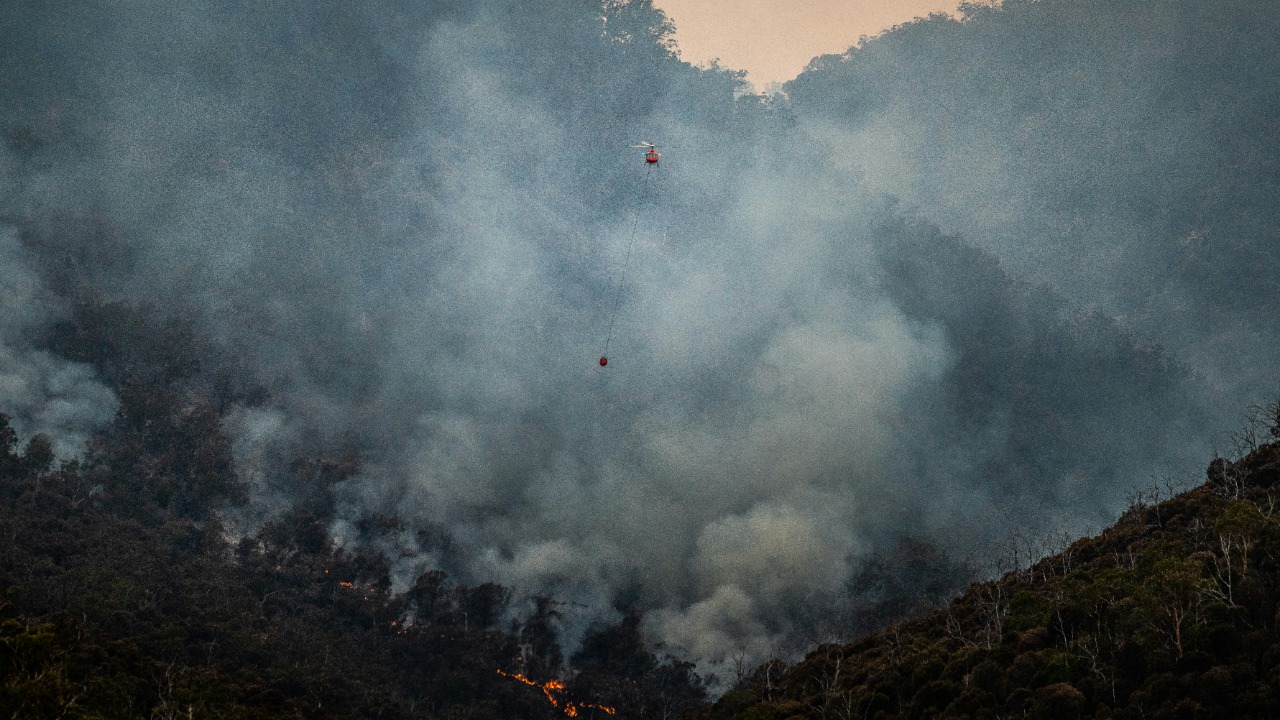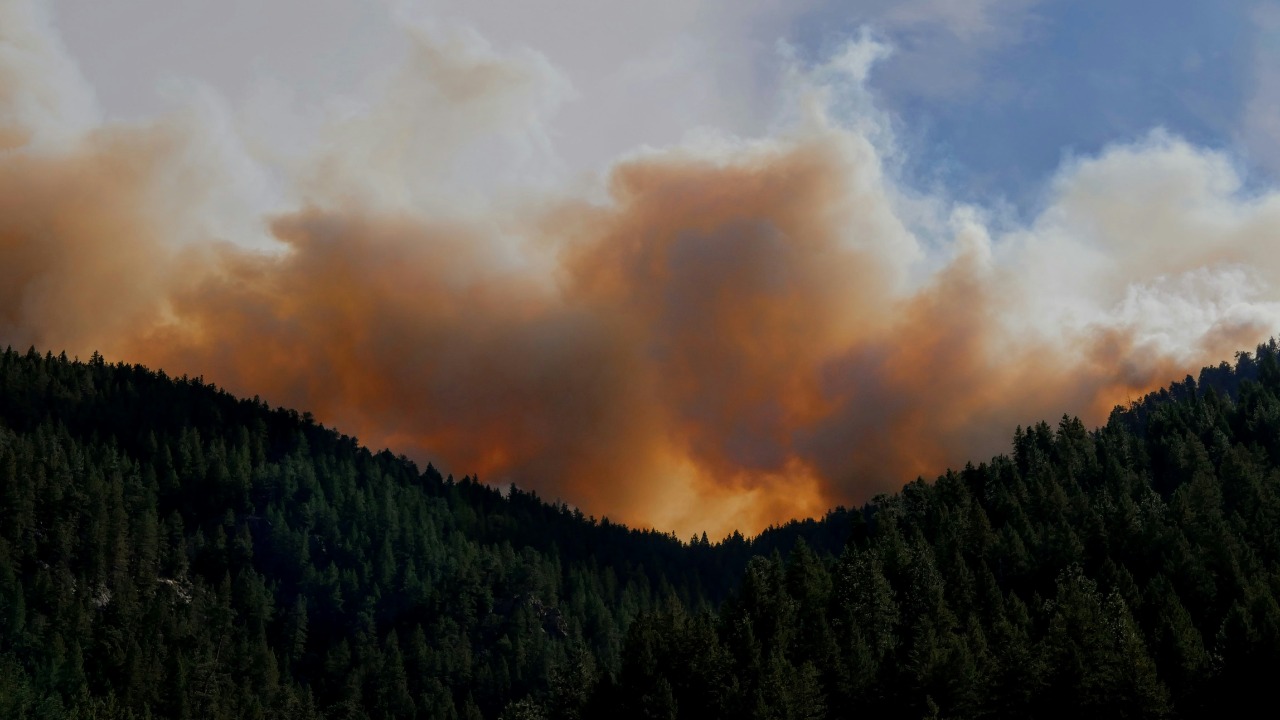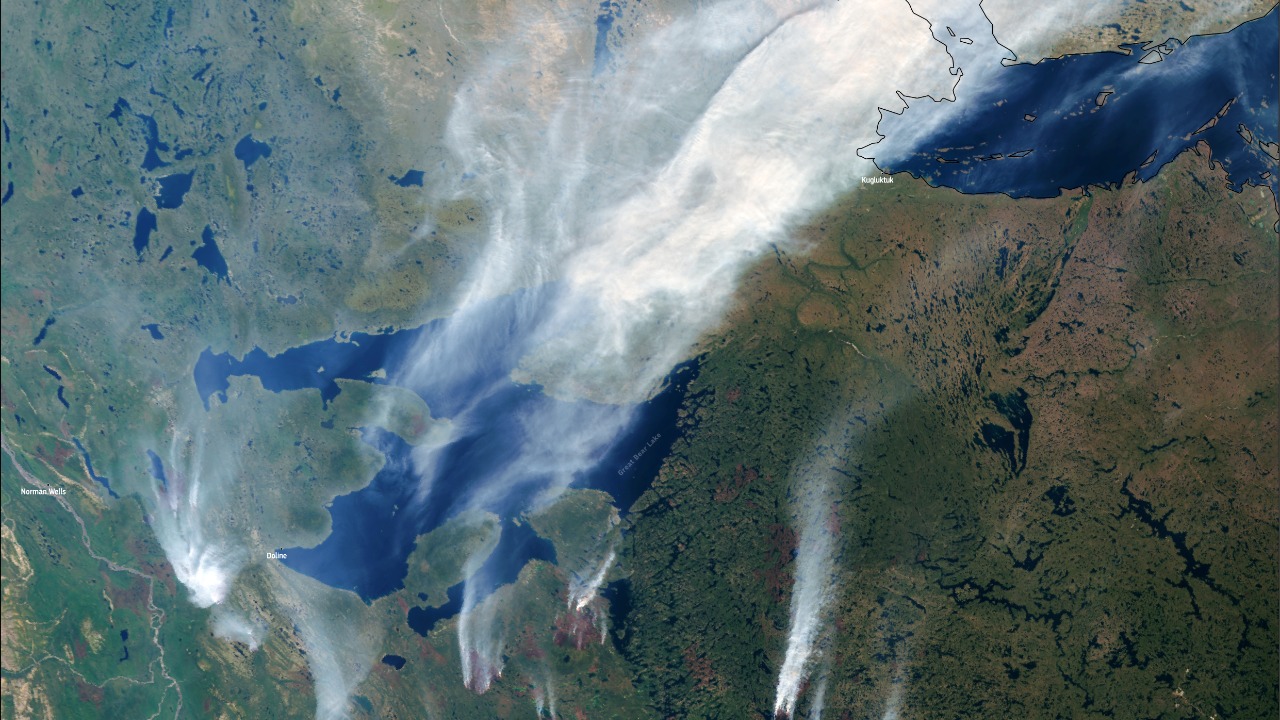
The world is experiencing an alarming rise in atmospheric CO₂ levels, a trend largely fueled by the increasing intensity and frequency of wildfires. These devastating events not only ravage landscapes but also release significant amounts of carbon dioxide, further intensifying global warming. As the planet grapples with these changes, understanding the complex relationship between wildfires and CO₂ emissions is crucial for shaping effective climate policies.
The Role of Wildfires in CO₂ Emissions

Natural Carbon Cycle Disruption
Wildfires play a disruptive role in the natural carbon cycle, fundamentally altering the balance between carbon storage and release. Typically, vegetation acts as a carbon sink, absorbing CO₂ during photosynthesis and storing it over time. However, when a wildfire occurs, this stored carbon is rapidly released back into the atmosphere in the form of carbon dioxide, contributing to the overall increase in atmospheric CO₂ levels. This process creates a feedback loop: as wildfires become more frequent and intense, they release more CO₂, which in turn exacerbates climate change, leading to conditions that are more conducive to wildfires.
Magnitude of Emissions
The magnitude of CO₂ emissions from wildfires is substantial, often rivaling or exceeding emissions from other sources like fossil fuels. For instance, the 2019-2020 Australian bushfires released an estimated 830 million tons of carbon dioxide into the atmosphere, a figure comparable to the annual emissions of countries like Germany. Similarly, the 2020 California wildfires emitted around 112 million tons of CO₂. These events serve as stark reminders of how wildfire emissions can contribute to atmospheric CO₂ peaks, underscoring the need for comprehensive strategies to address this issue.
Factors Driving Increased Wildfire Activity

Climate Change and Extreme Weather
Rising global temperatures and prolonged droughts are key drivers of increased wildfire activity. As the planet warms, conditions become more favorable for wildfires, with hotter, drier weather creating ideal fuel for ignition. Additionally, weather patterns such as El Niño can exacerbate these conditions, leading to more frequent and severe wildfires. According to NASA, these extreme weather events are becoming more common, creating a vicious cycle that fuels further climate change.
Human Influence and Land Management
Human activities, including agricultural practices and land use changes, also play a significant role in increasing wildfire risk. The expansion of agricultural land often involves deforestation and other practices that can increase the availability of combustible material. Moreover, debates over forest management strategies continue to complicate efforts to prevent wildfires. While some argue for the use of controlled burns to reduce fuel loads, others advocate for more natural approaches that allow ecosystems to regulate themselves. The effectiveness of these strategies remains a topic of ongoing discussion among experts and policymakers.
Impacts on Global Climate and Ecosystems

Accelerated Climate Change
The CO₂ released from wildfires contributes to the greenhouse effect, intensifying global warming. This additional CO₂ acts as a blanket, trapping heat within the Earth’s atmosphere and leading to rising global temperatures. According to the National Oceanic and Atmospheric Administration (NOAA), the warming effect of carbon dioxide has jumped by 50% over the past 25 years, a trend that is only expected to worsen with continued wildfire activity. The long-term impacts on global climate patterns could be profound, potentially altering weather systems and leading to more extreme climate events.
Biodiversity and Habitat Loss
Beyond climate change, wildfires have immediate and long-term effects on biodiversity and ecosystems. The destruction of habitats can lead to significant losses in species diversity, with some species facing the risk of extinction. In the aftermath of a wildfire, ecosystems may struggle to recover, particularly if conditions have changed to the point where they can no longer support the original flora and fauna. The risk of permanent habitat alteration is a growing concern, as it can have cascading effects on the broader ecological community.
Strategies for Mitigation and Adaptation

Reducing Emissions from Wildfires
Efforts to reduce emissions from wildfires focus on innovative fire management and prevention techniques. Advances in technology, such as satellite monitoring, play a crucial role in early detection and management of wildfires. These tools allow for real-time tracking of fire activity, enabling quicker response times and more effective containment. Additionally, strategies such as creating firebreaks and using non-flammable building materials can help mitigate the impact of wildfires on human communities and reduce overall emissions.
Policy and Global Cooperation
Addressing wildfire-related CO₂ emissions requires international collaboration and robust policy frameworks. Current policies often fall short of effectively managing the global nature of wildfire emissions, highlighting the need for a coordinated approach. Evaluating and improving these policies is essential for strengthening global climate resilience. According to The Guardian, international cooperation is crucial for addressing the root causes of increased wildfire activity and implementing effective mitigation strategies.
Future Research and Monitoring

Advancements in Atmospheric Monitoring
New technologies and methodologies are advancing the field of atmospheric monitoring, allowing for more precise tracking of CO₂ levels and wildfire activity. These advancements are critical for informed decision-making and policy development. Real-time data collection and analysis enable researchers to identify trends and assess the effectiveness of mitigation strategies. As these technologies continue to evolve, they will play an increasingly important role in understanding and addressing the impacts of wildfires on the atmosphere.
Interdisciplinary Approaches to Wildfire Science
Interdisciplinary collaboration is key to addressing the complex challenges posed by wildfires and their impact on the atmosphere. By bringing together climatologists, ecologists, and policymakers, it is possible to develop comprehensive strategies that consider the multifaceted nature of wildfires. Identifying key areas for future research, such as the role of wildfires in the natural carbon cycle and their impact on biodiversity, will be essential for developing effective solutions. Encouraging collaboration across disciplines will help ensure that the latest scientific findings are integrated into policy and practice.